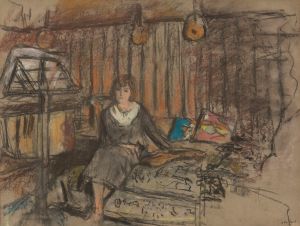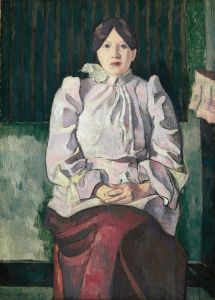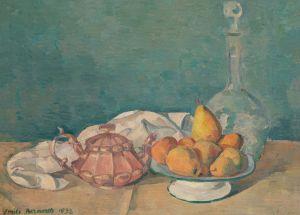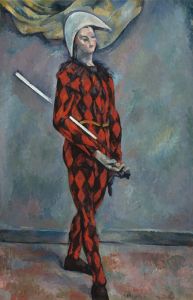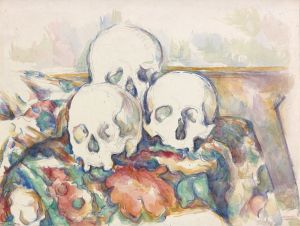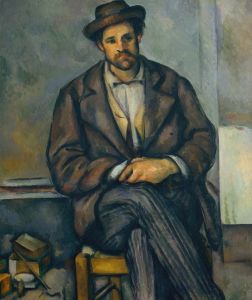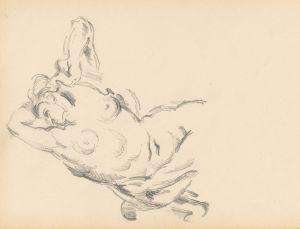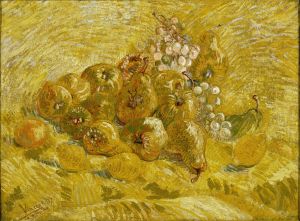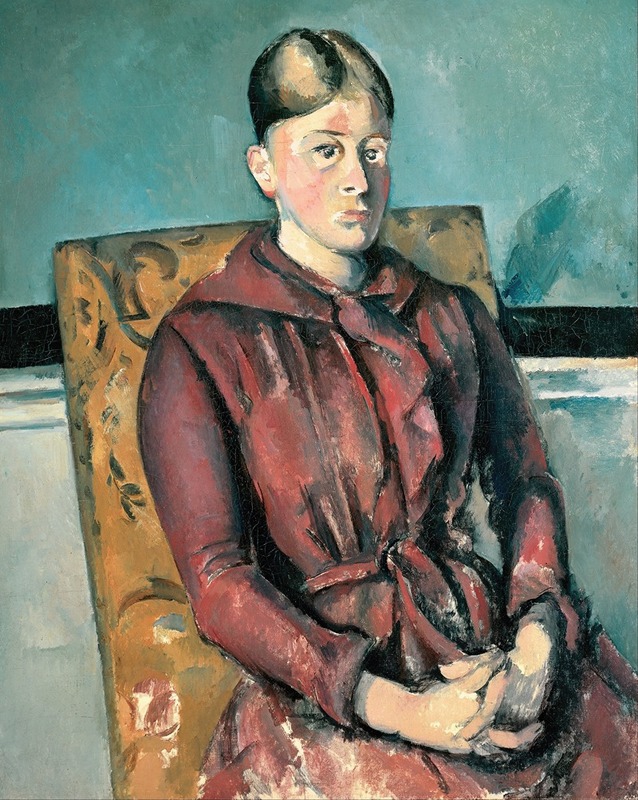
Madame Cézanne In A Yellow Armchair
A hand-painted replica of Paul Cézanne’s masterpiece Madame Cézanne In A Yellow Armchair, meticulously crafted by professional artists to capture the true essence of the original. Each piece is created with museum-quality canvas and rare mineral pigments, carefully painted by experienced artists with delicate brushstrokes and rich, layered colors to perfectly recreate the texture of the original artwork. Unlike machine-printed reproductions, this hand-painted version brings the painting to life, infused with the artist’s emotions and skill in every stroke. Whether for personal collection or home decoration, it instantly elevates the artistic atmosphere of any space.
"Madame Cézanne in a Yellow Armchair" is an oil painting created by the French Post-Impressionist artist Paul Cézanne. Painted around 1888-1890, this work is one of several portraits Cézanne made of his wife, Marie-Hortense Fiquet. Cézanne's portraits of his wife are notable for their exploration of form, color, and composition, reflecting his interest in capturing the essence of his subjects through a unique artistic lens.
The painting depicts Madame Cézanne seated in a yellow armchair, a recurring motif in Cézanne's work. Her pose is calm and composed, with her hands resting on her lap. The yellow armchair, with its rich, warm tones, contrasts with the cooler hues of her dress and the background, creating a dynamic interplay of colors. Cézanne's use of color is deliberate and methodical, as he sought to express the underlying structure and harmony of the scene.
Cézanne's approach to portraiture was distinct from his contemporaries. Rather than focusing on capturing a realistic likeness, he emphasized the geometric shapes and planes that make up the human form. In "Madame Cézanne in a Yellow Armchair," this is evident in the way he simplifies the shapes of her face and body, using broad brushstrokes and a limited color palette to convey depth and volume. This technique reflects Cézanne's broader artistic goals of reducing natural forms to their geometric essentials, a concept that would later influence the development of Cubism.
The painting is also notable for its psychological depth. While Cézanne's wife appears serene, there is an introspective quality to her expression, suggesting a sense of detachment or contemplation. This introspection is a hallmark of Cézanne's portraits, where the emotional state of the subject is conveyed through subtle nuances in posture and expression.
Cézanne's relationship with his wife was complex, and his portraits of her have been interpreted in various ways. Some art historians suggest that the emotional distance in these works reflects the couple's strained relationship, while others view them as a testament to Cézanne's dedication to his craft, prioritizing artistic exploration over personal sentiment.
"Madame Cézanne in a Yellow Armchair" is housed in the collection of the Museum of Fine Arts in Boston. It is considered an important example of Cézanne's portraiture and his contribution to the Post-Impressionist movement. The painting exemplifies his innovative approach to form and color, which challenged traditional artistic conventions and paved the way for future developments in modern art.
Cézanne's work, including this portrait, has had a lasting impact on the art world. His exploration of geometric simplification and color modulation influenced a generation of artists, including Pablo Picasso and Henri Matisse, who regarded Cézanne as a pivotal figure in the transition from 19th-century artistic traditions to the modernist movements of the 20th century.
In summary, "Madame Cézanne in a Yellow Armchair" is a significant work that highlights Paul Cézanne's unique approach to portraiture. Through his innovative use of form and color, Cézanne captures not only the physical presence of his wife but also a deeper, more introspective quality that continues to resonate with viewers today.





